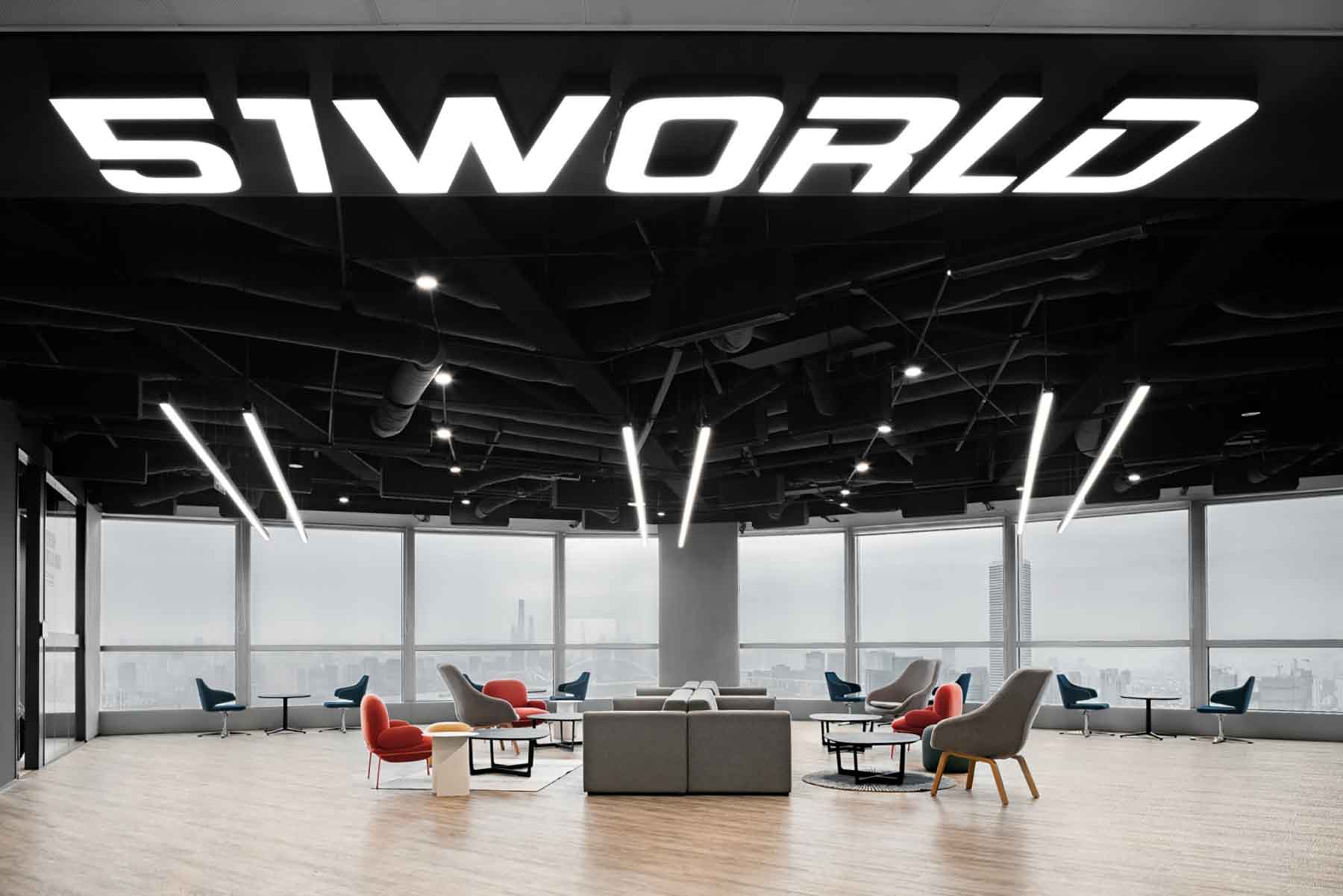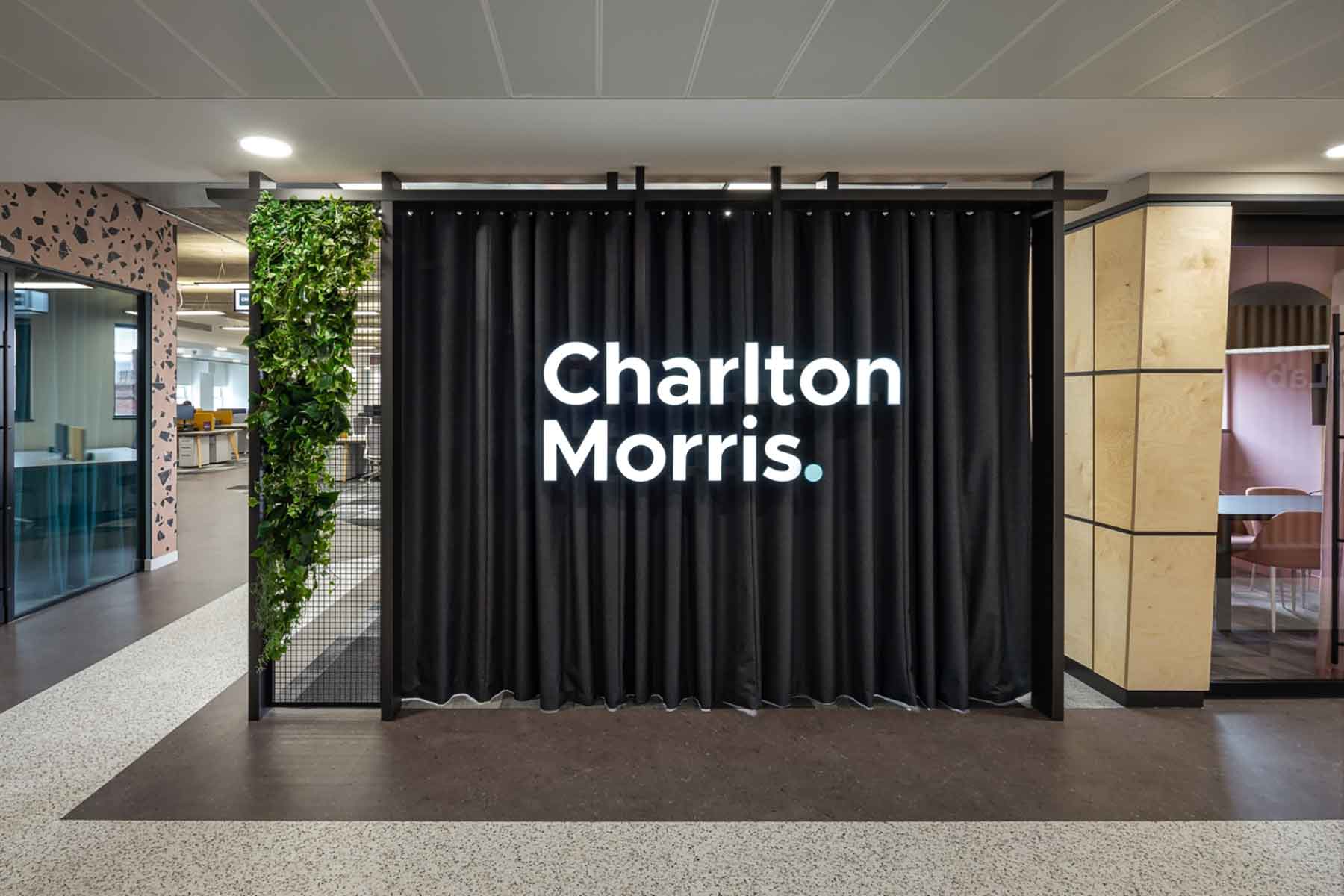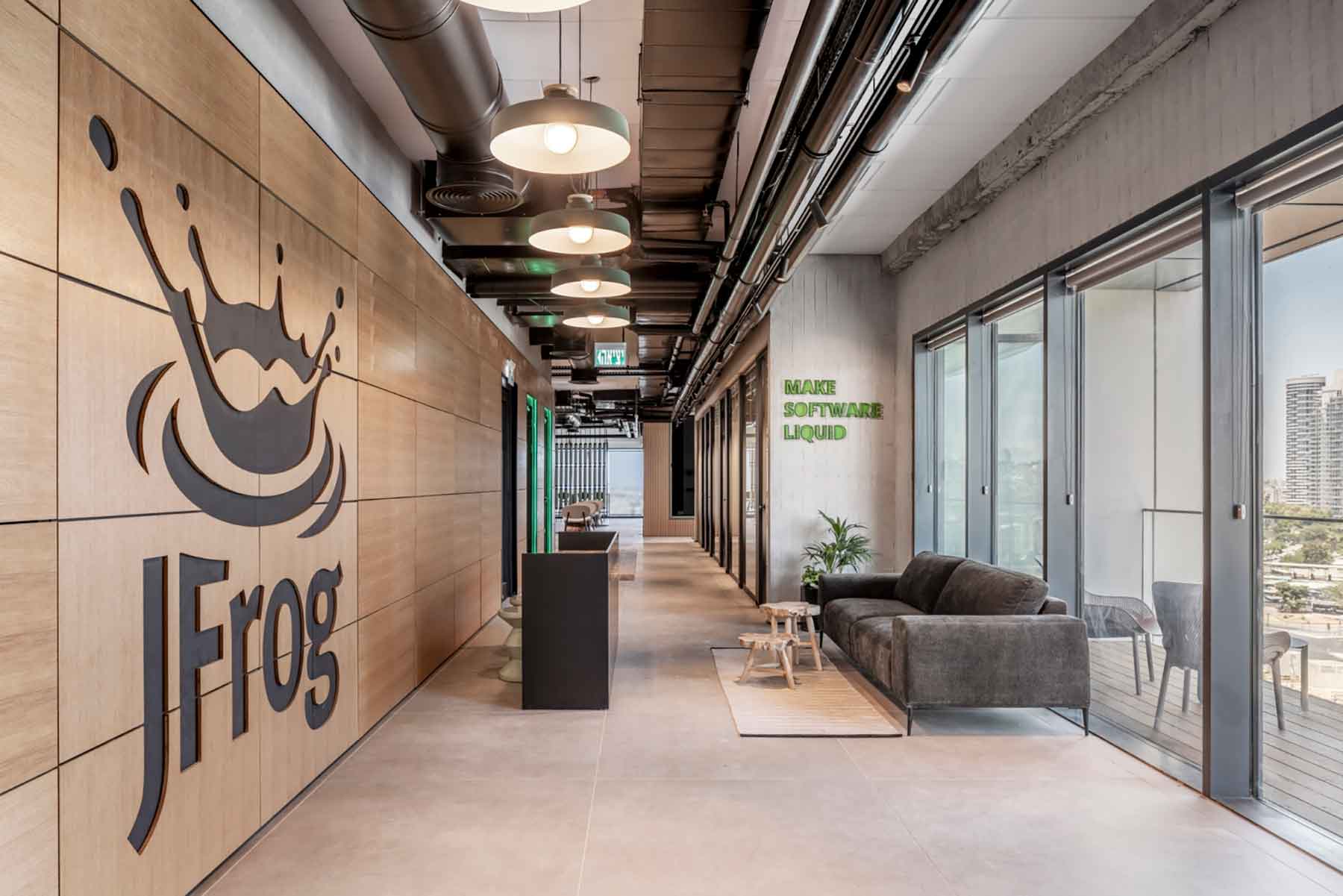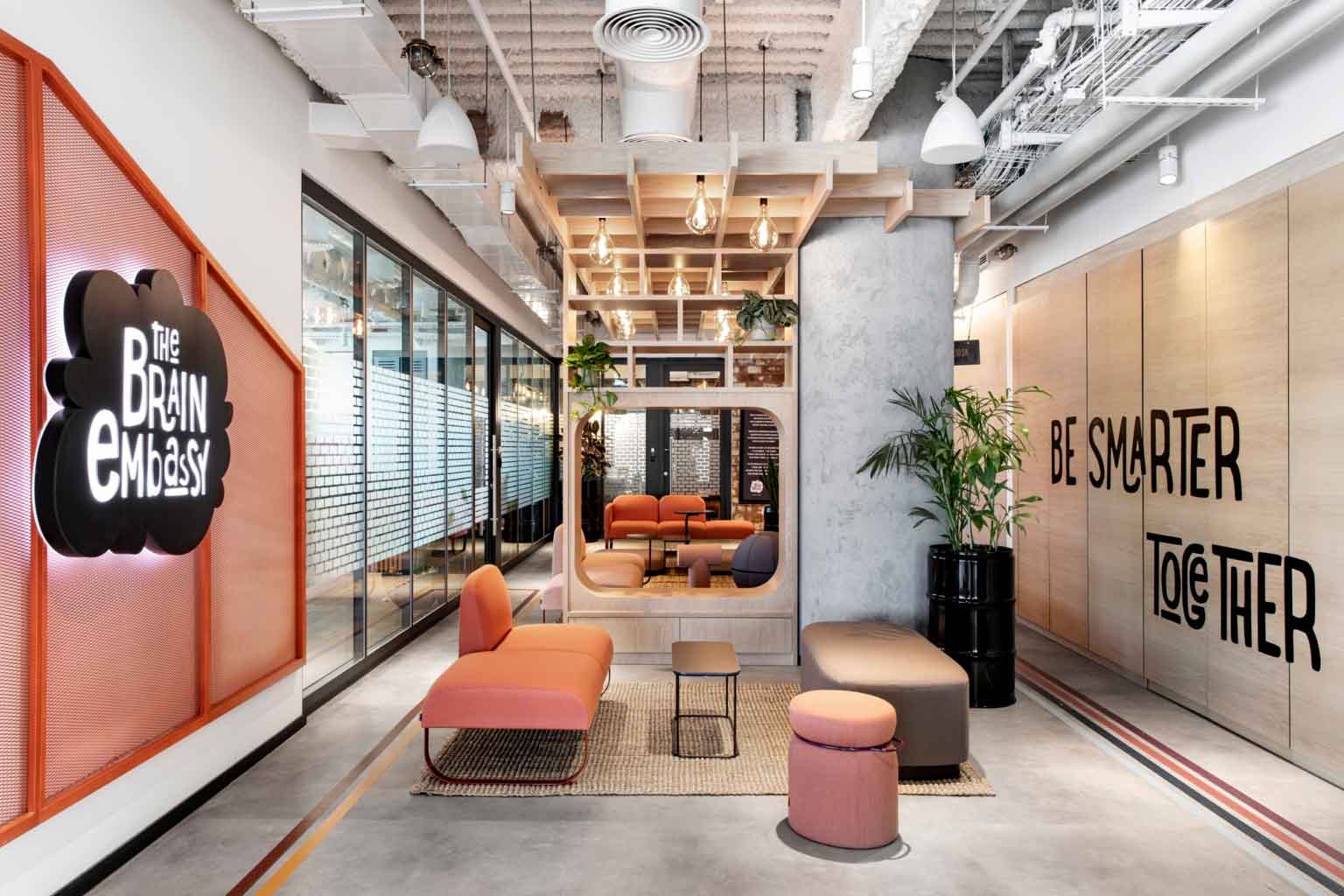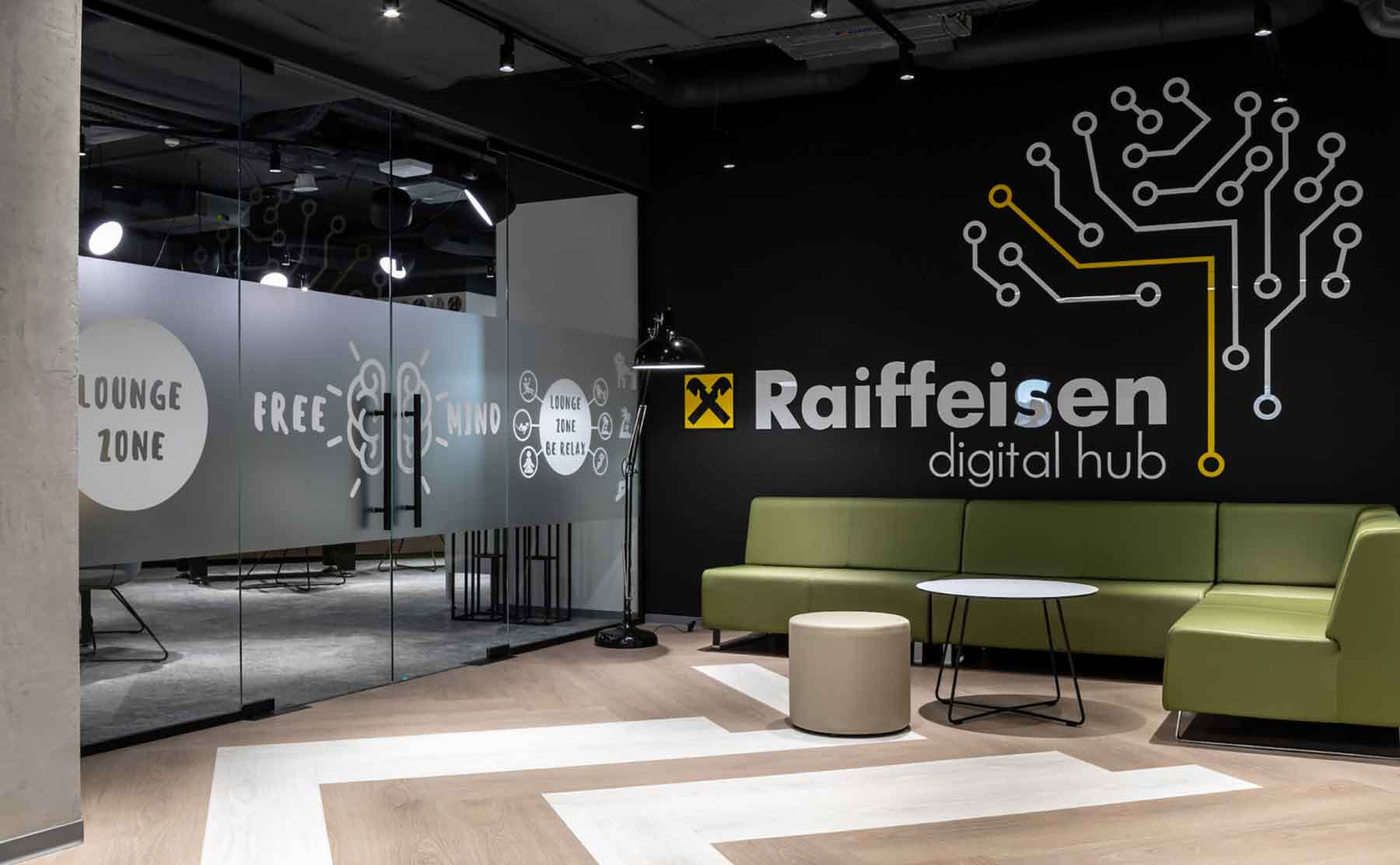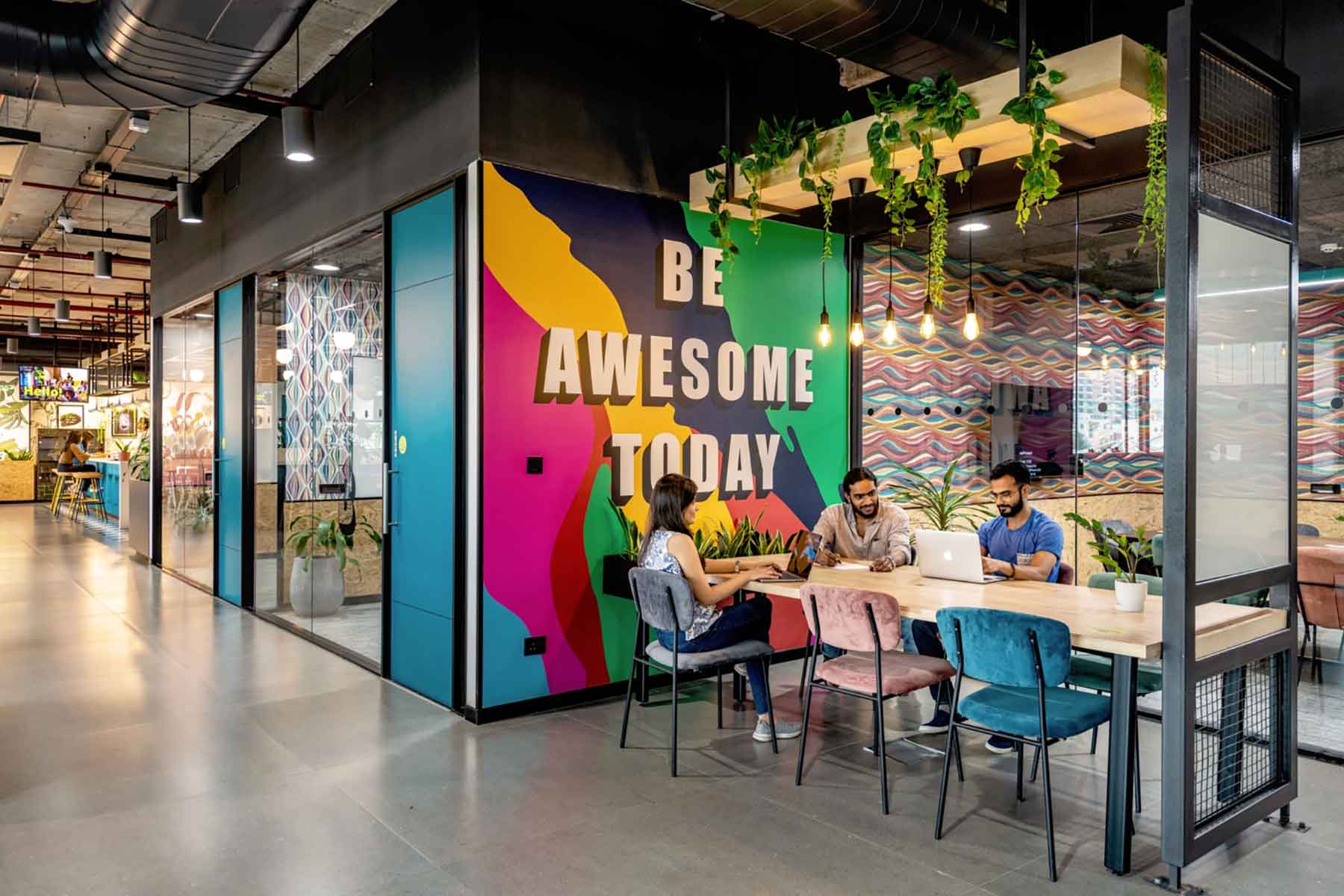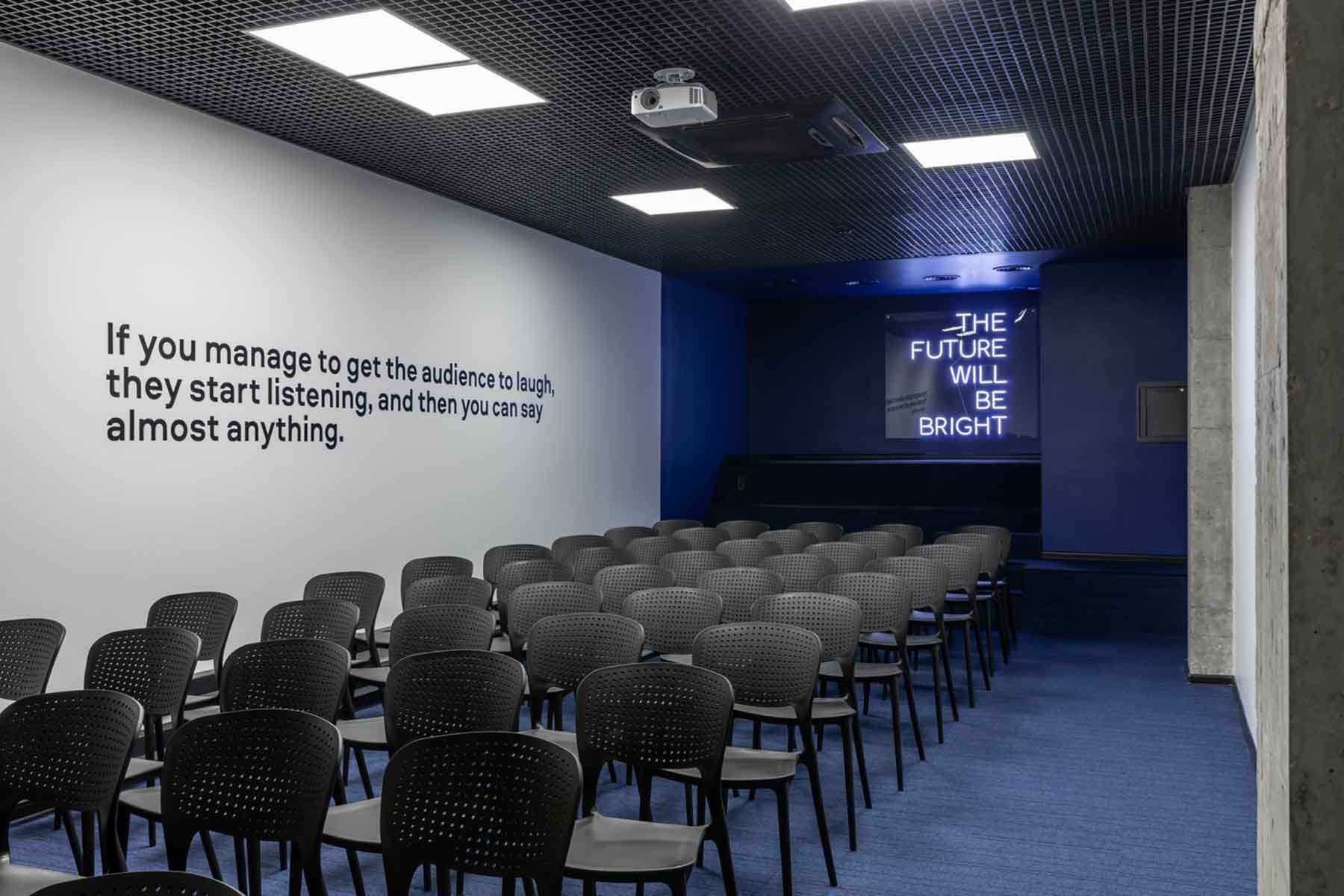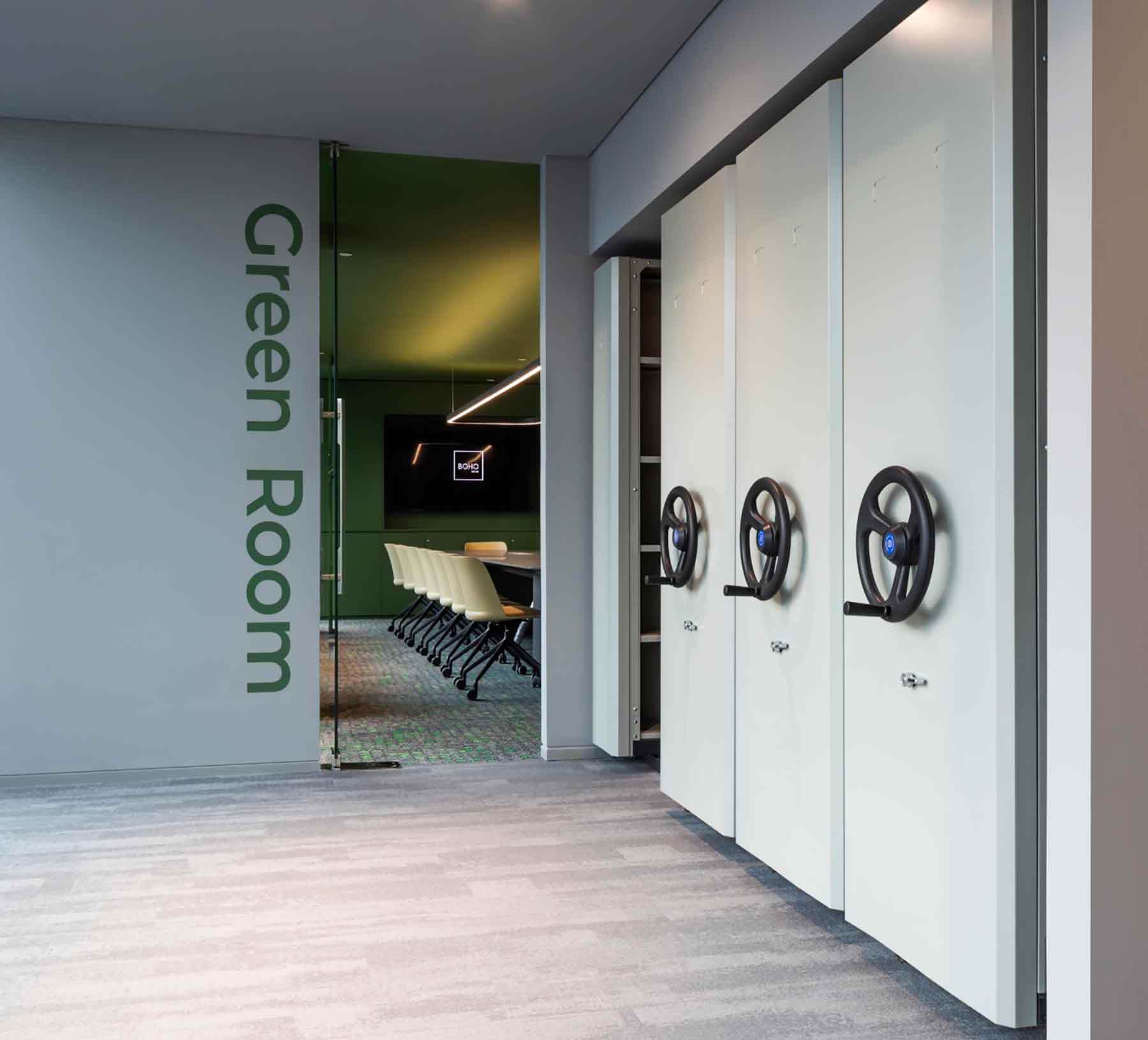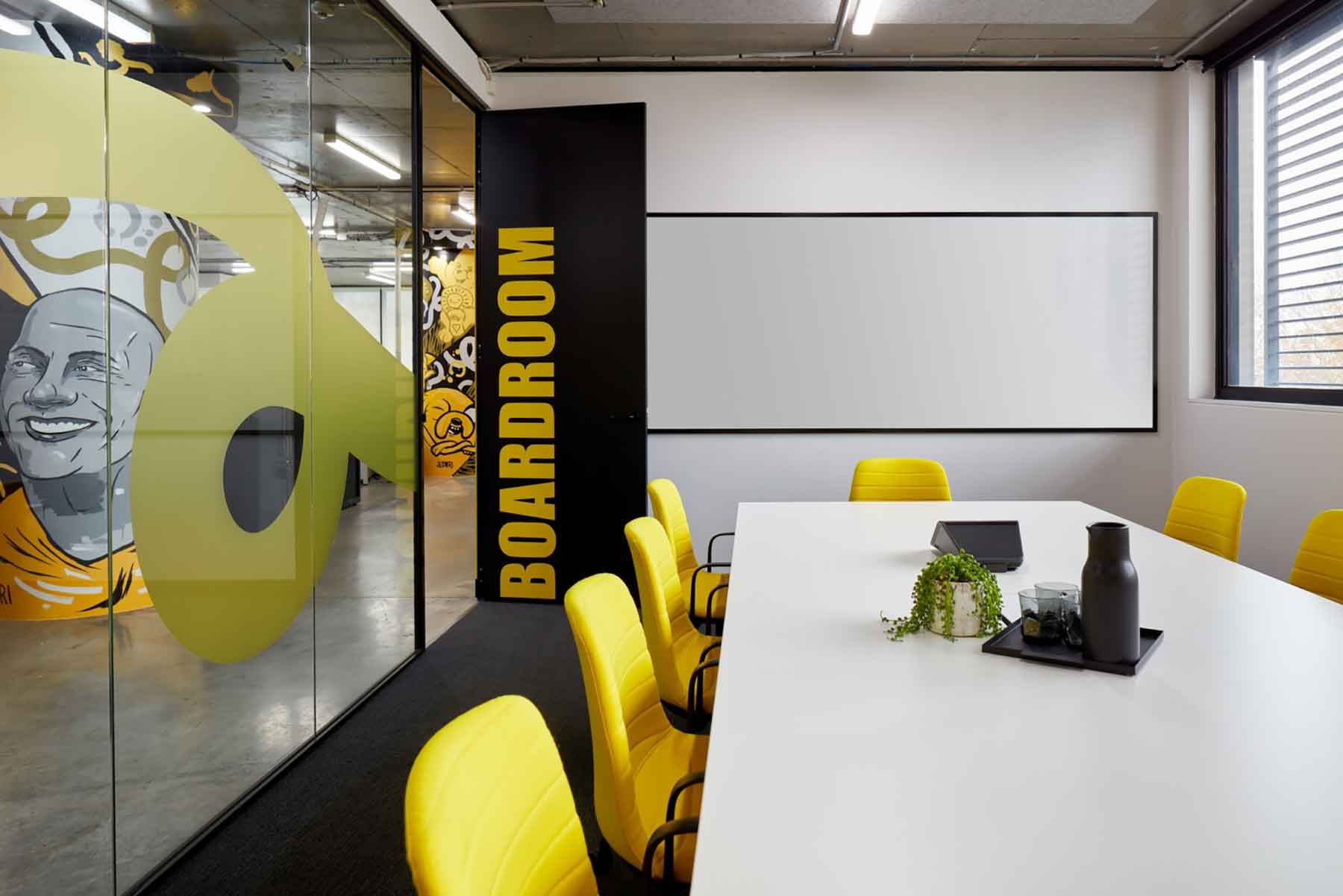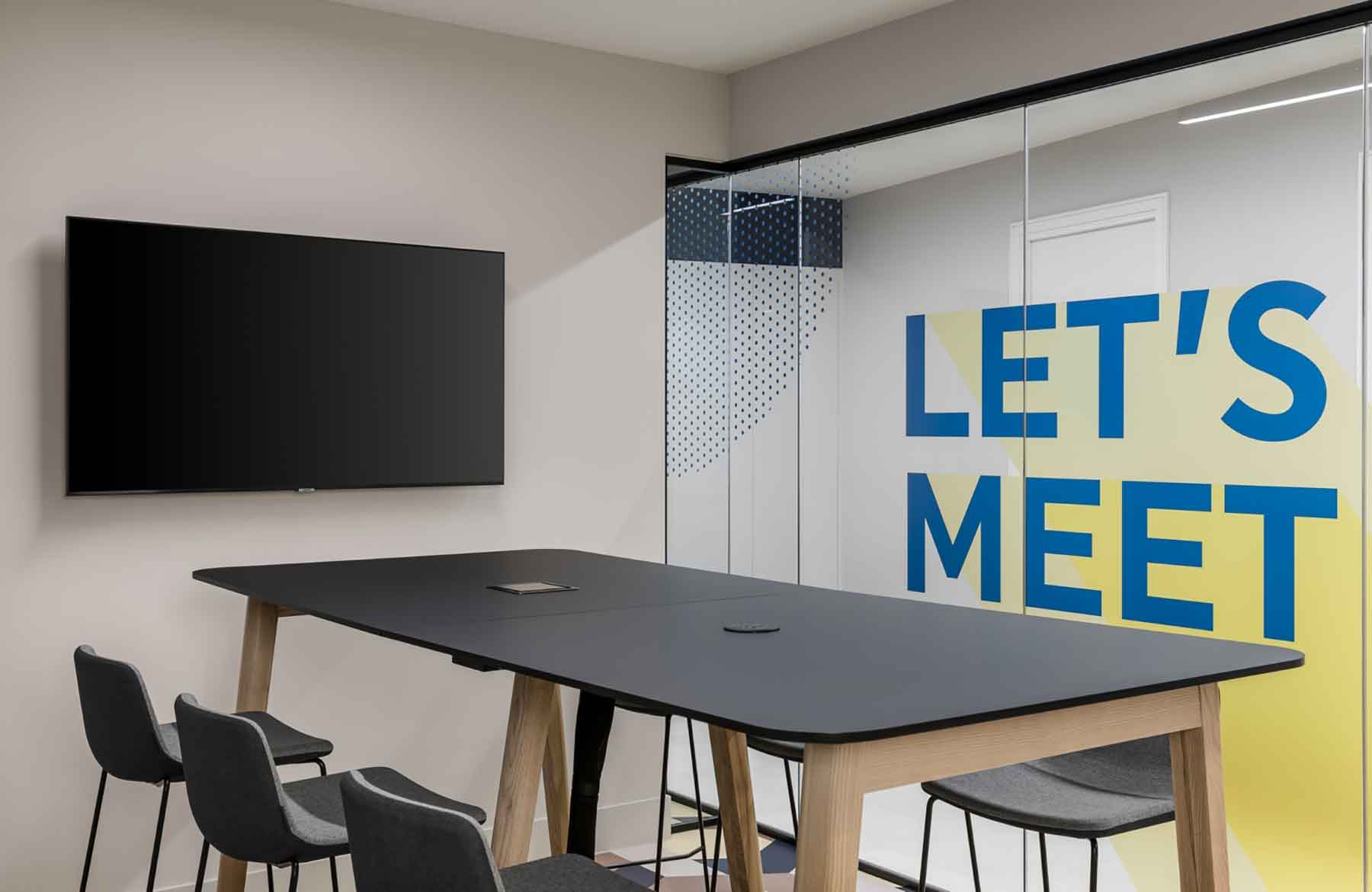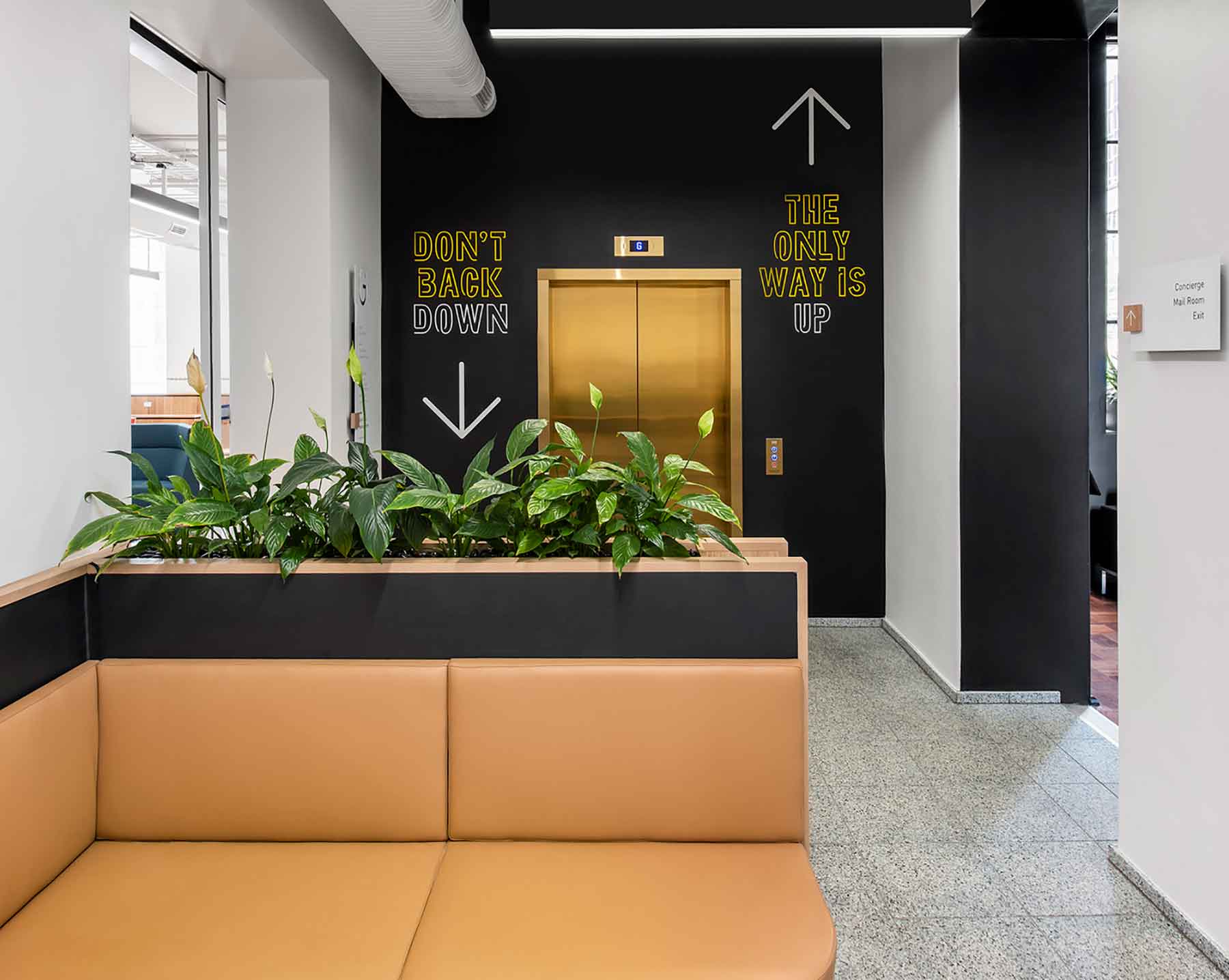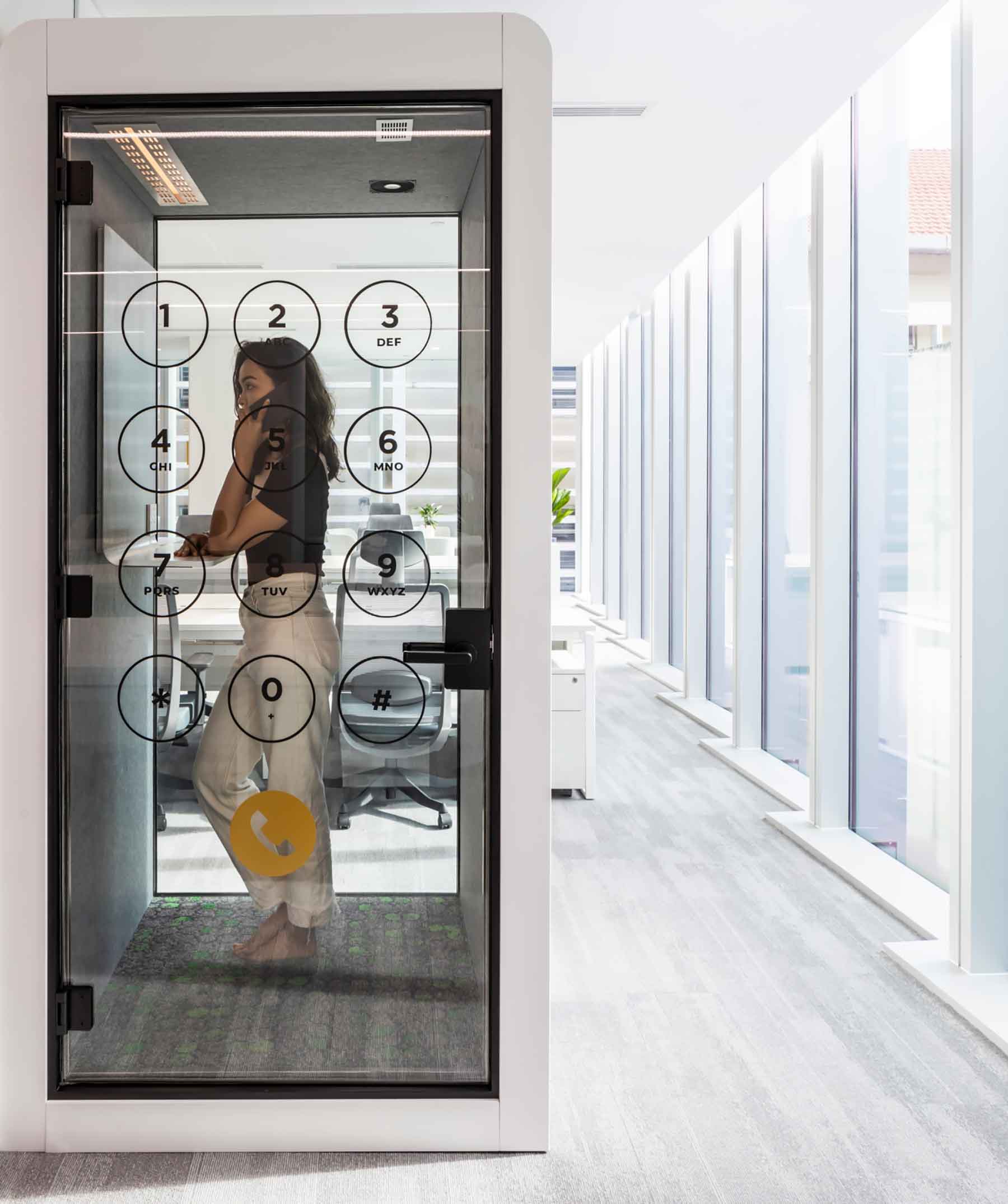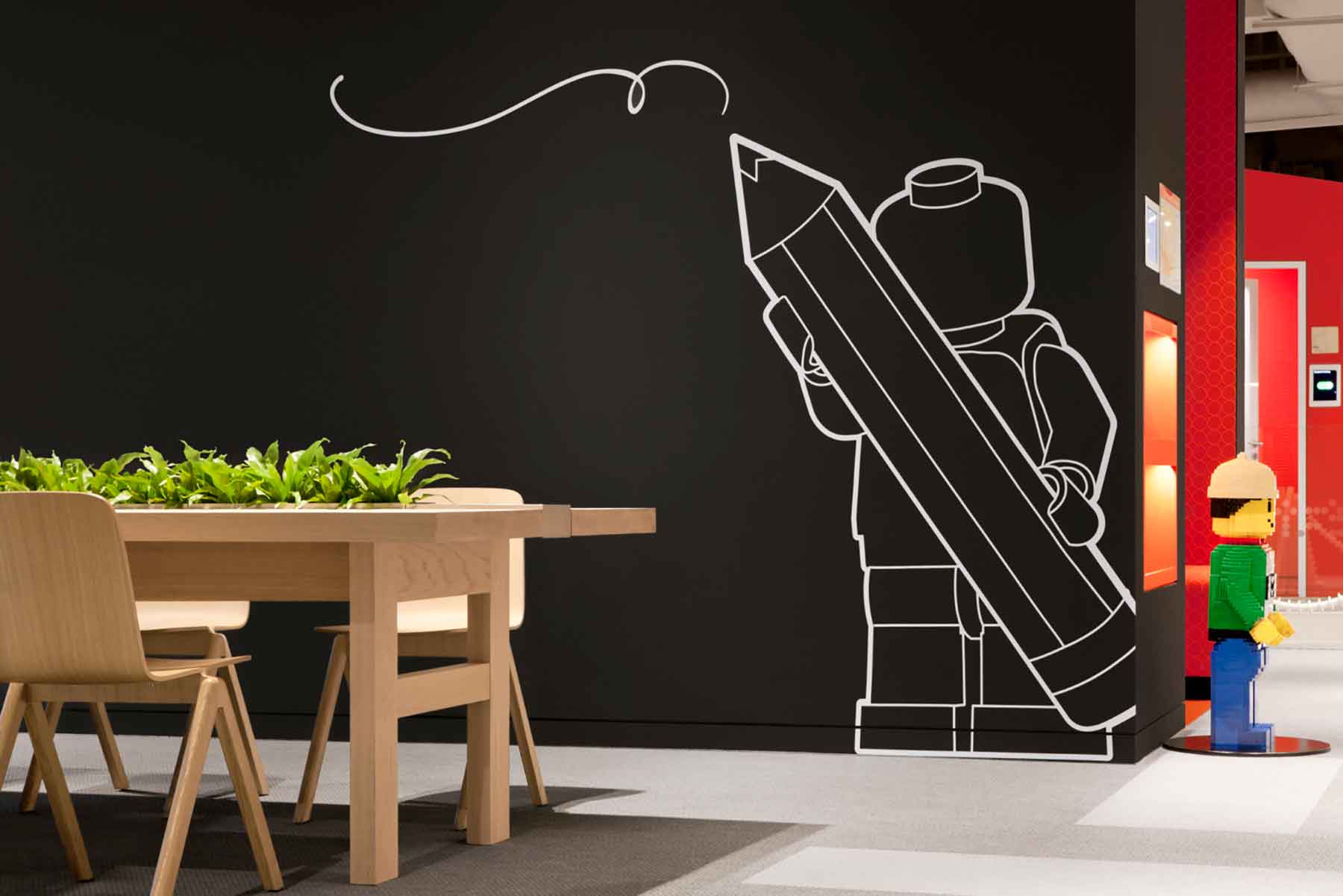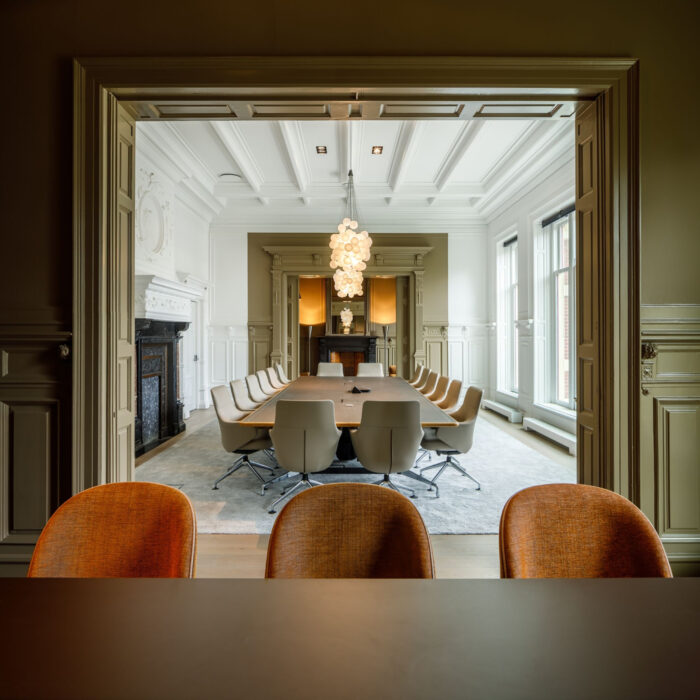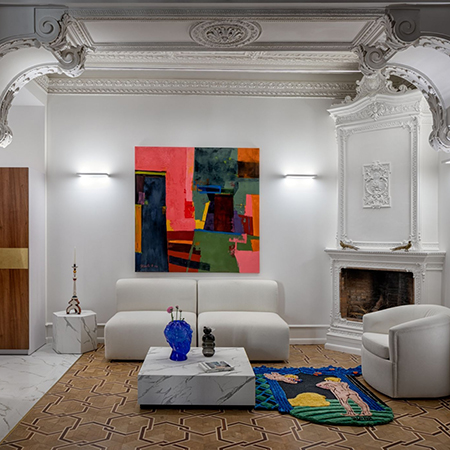The power of graphic elements in the work environment: beyond decoration
In our Inspiring blog We have discussed many issues related to the work environment: furniture, ergonomics, sustainability, health, lighting, colors, distribution… However, there is a topic that we want to delve into that is often considered secondary or merely decorative: the graphic elements.
The graphic elements comprise the entire sign communication system (linguistic or numerical), icons and images that convey a certain information or message. Its use amplifies the corporate image of the company and have become a widely used and highly effective resource for conveying a certain idea of the brand. Here we will analyze some of those resources applied to different purposes.
the logo is everything
The first and most important graphic sign that defines a workspace is the company logo, which is usually found at the entrance, but can also be dotted in strategic places. The logo is the cornerstone of the "brand image" from which the rest of the graphic supports are made: stationery, signage, web, newsletters and all visual channels. Each company establishes a protocol for the use of its logo (types of formats, colors, dimensions, etc.), as it is key to the immediate recognition of the company. The success of the logo, according to formal precepts, depends on several factors: it must read/understand in all kinds of size; must be reproducible on any material support; must be scalable (to become big or small without losing the identity that defines it); be distinguishable and not give rise to confusion and, above all, must linger in memory user view.
However, here we intend to make a semiotic analysis of the use of logos. What interests us is to give some examples of how a logo, strategically placed, offers an added message to the interpretation of the logo itself. And this is the case of our first example, that of the 51 World offices in Shanghai, a high technology and digitization company for companies and governments, which works in the metaverse. Hence, it is no coincidence that the logo in large letters illuminated with white light flies over a black “sky”, simulating a spaceship over the infinite background of the universe. The intention of the company, which exceeds the limits of the terrestrial world and heads towards unexplored (and virtual) horizons in a powerful ship, is crystal clear.
Embossed logos
There are as many variations on the placement of the logo at the entrance of a company, as there are companies. They may be printed on smooth surfaces, projected on screens, retroilluminated or placed raised, which is the case of these two companies. In the image above we find the charlston morris logo, an English contracting services company, which has placed the illuminated letters of its elegant logo suspended behind some black fabric curtains, thanks to almost imperceptible black metal profiles. A very scenic effect that especially emphasizes the name of the company.
In the other image, we enter the offices of JFrog in Tel Aviv, a technology development company software. Facing the entrance, a large debossed logo welcomes the visitor. On the wooden paneling, it has been laser silhouetted the profile of the logo, with interior padding in brown. In this case, the logo is accompanied by an icon (the crown) that refers us to the toad (frog) become a prince.
Logo accompanied by “claim”
In recent decades, the claim, a claim phrase that complements the logo and defines the company, not only its activity, but its philosophy. The typography chosen also has connotative attributes, that is, it conveys an intention or ideology.
Top image: another example of embossed and backlit logo, but which is also completed with a claim, slogan or motivational phrase. "The Brain Embassy" is the logo of these coworking offices in Tel Aviv, which is accompanied by the phrase "Be Smarter Together", which implies a very appropriate declaration of principles for a coworking. In this case, it is a typology personalized, with small caps in different sizes and informal spellings, which denotes a youthful, fresh and creative space.
bottom image: the entrance of this office of the Raiffeisen bank in kyiv It has an agglomeration of graphic elements that describe, at a single glance, the company: logo, written name, claim, icons, signage and all kinds of indications. Of course, the image it projects is quite different from traditional banks: it is a modern, youthful and digitized space.
motivational messages
They are already part of the business culture within an office: motivational messages they became fashionable a few years ago and invaded all areas, from our homes (on cups, paintings, doormats, etc.), restaurants, shops and offices. The messages are varied and issued from different enunciative points: sometimes they are famous quotes, that force a more reflective decoding. Other times they are phrases that reflect philosophy of the company, the correct conduct or adequate attitude that is expected of its personnel. And very frequent are the phrases with no further pretense of create a mood positive and cheerful. For each type of phrase, a suitable place and typology is chosen, so that the message reaches more directly and generates a emotional impact in the worker.
Indicative signage
La signage It is a closed system of signs that serves to orient and guide users within a space. This can be done in multiple ways, since it is a complex discipline in which the design, linguistics, semiotics and neurology, to delve into the various forms of understanding (coding and decoding of messages). The most traditional way is through arrows, icons and indicative signs. However, office interior design has found in the graphic design a whole vein of new ideas that solve several problems at once. HE amplifies signage with large letters indicative of the uses of the spaces that also become part of the design of the space. It is a very effective formula to identify a space and, at the same time, add that point of design and modernity so yearned for.
connotative signage
This iconographic system It fulfills a double function: using signs and spelling, it serves to indicate the direction or position of the user, adding a intended message to the situation. Thus, we see in these two examples, how a motivational phrase to indicate the direction of the elevators (Don't back down front The only way is up) or, in the other image, the indication “Meeting room” is replaced by an imperative phrase (let's meet) that animates the meeting. The resource of using fassertive or imperative lines instead of the noun that indicates the location is very common in modern offices, where the entrepreneurial, cooperative and creative spirit of workers through visual and dialectical stimuli.
numerical signage
The numbers or figures They can also be used both for signaling and for creating iconographic meanings, as in the case of the cabin or boat to make calls, so widespread in the new modern offices. In this case, the mobile keyboard replaces the term by means of a highly recognizable iconographic representation. In the other case, the numeric function It is common, since it indicates the cabin number, but with one intention: that the design and typography favor the whole with a modern and current effect.
iconographic elements
On many occasions, the mere visualization of a symbol, sign or icon it helps the user to locate himself and, in addition, conveys a meaning, idea or message. The iconographic representations, Without textual support, they are very effective, but they are not always easy to interpret, so the sign must be as direct and recognizable as possible. We find it, for example, in this multipurpose room (upper image), where a corner with two stalls was created in one of the columns and illustrated with a light bulb, an unconventional sign (that is, it does not belong to a closed system of already structured signs, such as Braille or language of deaf-mutes), but which has naturally and socially acquired a certain meaning: thinking, having an idea, reasoning... In fact, it is related to the popular expression "the light bulb went on." In the case of the image below, it is a room Creative workshops inside the offices of Lego. The drawing replaces the word "workshop" or "creative room" through a very recognizable icon of the Lego brand, which holds a huge pencil.
In general, all the iconographic signage, without textual support (that is, not accompanied by phrases or words) resolves certain activities, functions or locations very well, although it is true that sometimes the overly elaborate designs they tend to more open and equivocal interpretations.
Photos: Limobel Inwo and OfficeSnapShot
